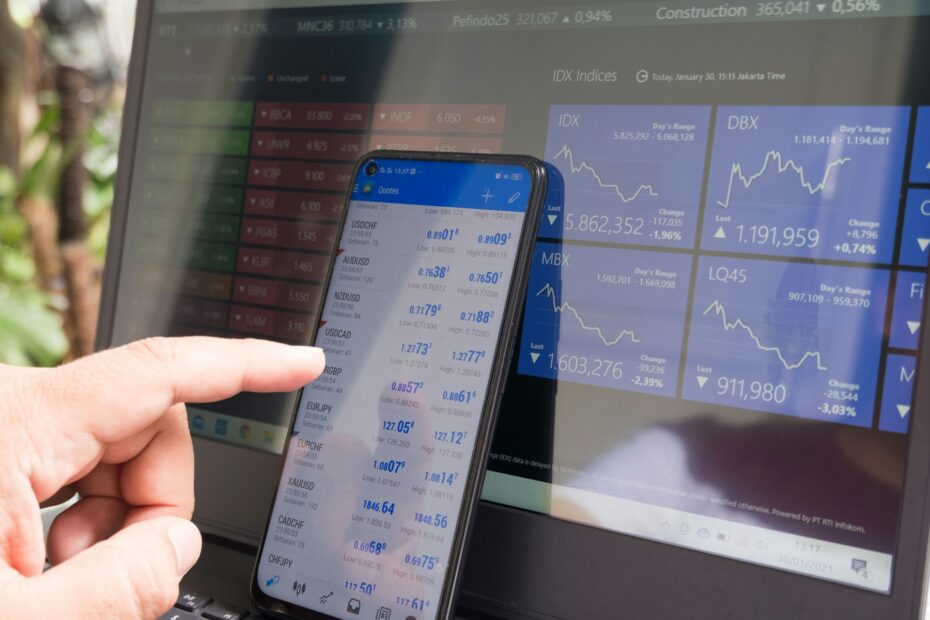Introduction
In recent years, the integration of technology into the financial markets has reached new heights, with automated trading systems becoming increasingly popular. One avenue gaining traction is the use of robots to execute Forex trading strategies. The allure of automated trading lies in its ability to eliminate human emotions, execute trades at lightning speed, and operate 24/7. In this comprehensive guide, we will explore the feasibility of programming a robot for Forex trading and delve into the step-by-step process of how to achieve it.
I. Understanding Forex Trading
Before delving into the intricacies of programming a trading robot, it’s essential to have a solid understanding of the Forex market. Forex, or foreign exchange, is the global marketplace for trading currencies. It operates 24 hours a day, five days a week, allowing for continuous trading across different time zones. The goal of Forex trading is to profit from the fluctuations in currency exchange rates.
II. The Advantages of Using a Trading Robot
Automated trading systems, often referred to as trading robots or Expert Advisors (EAs), offer several advantages that attract traders:
a. Elimination of Emotions
One of the primary benefits of using a trading robot is the elimination of emotional decision-making. Robots operate based on pre-programmed rules, devoid of fear, greed, or hesitation.
b. Speed and Efficiency
Robots can execute trades at speeds impossible for human traders. They can analyze market conditions and place orders within milliseconds, taking advantage of fleeting opportunities.
c. 24/7 Operation
Unlike human traders who need rest, trading robots can operate around the clock. This ensures that trading opportunities are not missed, especially in a market as dynamic as Forex.
d. Consistency
Robots follow predefined strategies consistently, avoiding the inconsistencies that may arise due to human factors. This consistency is crucial for implementing a successful trading strategy.
III. Can You Program a Robot for Forex Trading?
The short answer is yes, you can program a robot for Forex trading. However, it’s essential to recognize that programming a trading robot requires a solid understanding of both Forex markets and programming languages. Here are the key steps to get started:
a. Acquiring the Necessary Skills
Before diving into the world of automated trading, it’s crucial to develop a solid foundation in both Forex trading and programming. Familiarize yourself with the basics of technical and fundamental analysis, as well as trading strategies commonly used in the Forex market.
Simultaneously, gain proficiency in a programming language suitable for developing trading algorithms. Languages like Python, MQL4, and MQL5 are popular choices for coding trading robots. Online courses, tutorials, and practice in simulated trading environments can aid in building the necessary skills.
b. Choosing a Trading Platform
Selecting a suitable trading platform is a critical decision in the process of programming a Forex trading robot. The choice of platform often determines the programming language you’ll use and the available features for developing and testing your robot.
MetaTrader 4 (MT4) and MetaTrader 5 (MT5) are two widely used platforms that support algorithmic trading. These platforms provide a user-friendly interface and support the MQL4 and MQL5 programming languages, respectively. Other platforms, such as NinjaTrader, cAlgo, and TradeStation, also offer algorithmic trading capabilities.
c. Developing a Trading Strategy
The heart of any trading robot lies in its underlying strategy. A successful strategy should be based on sound financial principles, thorough analysis, and a clear risk management plan. Traders often employ a combination of technical indicators, chart patterns, and economic indicators to create their strategies.
When programming a trading robot, it’s crucial to translate the chosen strategy into a set of rules that the algorithm can follow. Consider factors such as entry and exit points, risk-reward ratios, and position sizing in the development of your strategy.
d. Writing the Code
Once you have a clear strategy in mind, it’s time to start coding your trading robot. If you’ve chosen MetaTrader as your trading platform, you’ll use MQL4 or MQL5 to write the code. If you’re using another platform, make sure to refer to the platform’s documentation for guidance on programming.
When writing the code, pay close attention to error handling, risk management, and backtesting capabilities. Thoroughly test your code in a simulated environment to identify and rectify any potential issues before deploying it in a live market.
e. Backtesting and Optimization
Before deploying your trading robot in a live market, it’s essential to conduct extensive backtesting. Backtesting involves applying your algorithm to historical market data to assess its performance under various conditions. This step helps identify strengths and weaknesses in your strategy, allowing for necessary adjustments.
Optimization is the process of fine-tuning your trading robot by adjusting parameters to maximize its performance. However, it’s crucial to strike a balance and avoid over-optimization, as this can lead to a strategy that performs well in historical data but fails in live market conditions.
IV. Risks and Challenges
While the prospect of automated Forex trading is promising, it comes with its set of risks and challenges. Traders should be aware of the following:
a. Market Conditions
Market conditions can change rapidly, and historical data may not accurately reflect future performance. Unforeseen events, such as economic crises or geopolitical developments, can impact the effectiveness of your trading robot.
b. Technical Risks
The complexity of coding and the potential for software bugs pose technical risks to automated trading systems. Regular monitoring and debugging are essential to ensure the proper functioning of your robot.
c. Over-Optimization
As mentioned earlier, over-optimization can lead to a strategy that performs well in historical data but fails to adapt to changing market conditions. Traders should strike a balance and avoid excessive tweaking of parameters based on past performance.
d. Emotional Factors
While automated trading eliminates emotional decision-making during trade execution, emotions can still influence the development and adjustment of trading algorithms. Traders must remain disciplined and objective throughout the process.
V. Deploying Your Trading Robot
Once you have successfully programmed, backtested, and optimized your trading robot, it’s time to deploy it in a live market. However, exercising caution is paramount. Start with a small capital allocation and closely monitor the robot’s performance. Regularly review and update your strategy based on changing market conditions.
Conclusion
Programming a robot for Forex trading is a challenging yet rewarding endeavor. The integration of technology in the financial markets has opened up new opportunities for traders to automate their strategies and enhance overall efficiency. By acquiring the necessary skills, choosing the right trading platform, developing a robust strategy, and addressing risks and challenges, traders can create and deploy effective trading robots. However, it’s crucial to approach automated trading with caution, understanding that success requires ongoing monitoring, optimization, and adaptation to ever-changing market conditions.
Photo by Marga Santoso on Unsplash



